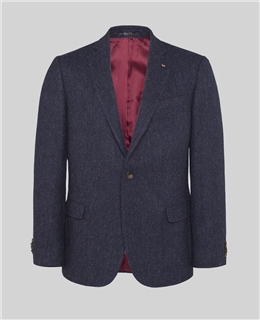
Handwoven tweed is the foundation of our family brand – in the 19th century John Magee, a wholesale cloth merchant, would visit monthly tweed markets across South-West Donegal, trading directly with the weavers. At that time weaving was a skill many farmers and fishermen had honed, the cloth they wove on large wooden looms was hardwearing and tough. In the damp climate of Northwest Ireland, tweed was originally famed for its warmth and durability.

Handwoven tweed is the foundation of our family brand – in the 19th century John Magee, a wholesale cloth merchant, would visit monthly tweed markets across South-West Donegal, trading directly with the weavers. At that time weaving was a skill many farmers and fishermen had honed, the cloth they wove on large wooden looms was hardwearing and tough. In the damp climate of Northwest Ireland, tweed was originally famed for its warmth and durability.

Robert Temple, John Magee’s apprentice and cousin took over the business in the early 1900s and made some revolutionary changes. Robert brought the handweavers in-house, opening a tweed factory where the design and quality could be more closely controlled, ensuring consistency across repeat fabrics. This move is seen by many as having saved handwoven Donegal Tweed from extinction.


Although power looms took over in the 1970s, we are still designing and producing a unique handwoven fabric to this day. We retain similar, timeless designs namely Herringbone – inspired by fishbones and the ‘true Donegal tweed’ – Salt & Pepper. We use the finest of natural fibre yarns like lambswool, mohair and cashmere. Designs are sent to the weavers who work in their homes, the raw fabric is then sent back to the mill for finishing. This raw, oily fabric is washed in the peaty waters of the River Eske, which flows by the mill, resulting in a beautifully soft finish.













